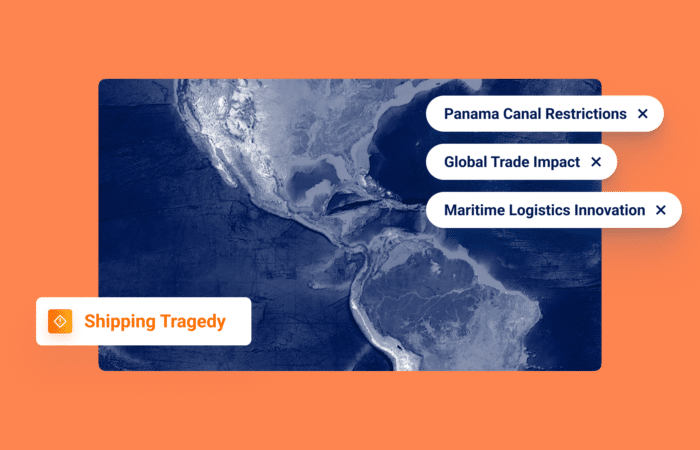What’s inside?
The analysis that follows was written by Lars Jensen, CEO & Partner at Vespucci Maritime and global supply chain expert, using data from Windward’s Ocean Freight Visibility solution
Vessel capacity shortages continue to plague the market and keep freight rates at highly elevated level. These shortages are quite simply due to two out of three vessels globally being severely delayed, which de facto serves to remove capacity from the global fleet. Hence, in order for freight rates to normalize, then schedule reliability would also need to normalize. The reliability problems are caused by congestion in many ports, which in turn means that it is important to be able to assess the developments in port congestion.
Measuring port congestion is somewhat difficult as ports provide very different data elements, and many ports do not provide any data elements at all in relation to congestion, especially not in real time.
Windward Ocean Freight Visibility offers insights on the world’s entire fleet of container vessels, including real-time tracking, 10+ years of historical data and full characteristics. In addition, the solution offers extensive real-time and historical analytics on over 900 of the world’s ports and terminals. Using data from the platform, let’s take a closer look at three of the key ports in North Europe: Antwerp, Rotterdam, and Hamburg.
Windward data shows how many vessels are calling these three ports as well as the exact amount of time any given container vessel has spent there. This is furthermore combined with data pertaining to the nominal capacity of each vessel. Based on this it is possible to see how much time it takes to handle vessels, how much this deviates from the pre-pandemic level and whether there is a trend back towards such normal conditions.
Sometimes vessels are recorded as having spent very excessive amounts of time in a port and this can skew statistical analysis of the matter. For the analysis here any vessel call which has taken more than 100 hours has been scoped out of the dataset.
Port call lengths are peaking in early 2022
2018-2019 can be seen as setting a baseline before the pandemic, and the performance was quite stable for the three ports. For Antwerp and Rotterdam, the average time was roughly 24 hours whereas for Hamburg it was 32 hours. But this has increased over the past 18 months and peaking in early 2022 at 34 hours for Antwerp, 44 hours for Hamburg and 32 hours for Rotterdam.
Antwerp and Rotterdam have shown improvements since February 2022, but the peak seen in Hamburg happened in April and has only started to go down again in May.
But such increases could be due to increased vessel sizes with fewer vessel calls and cannot be seen offhand as reductions in port efficiency.
Looking further into the Windward data, it turns out that the number of port calls has declined 15% to Hamburg and Antwerp and 27% to Rotterdam. But this decline in the number of vessel calls has not been matched by an equal increase in vessel sizes. Quite the contrary, as the average vessel size declined in Hamburg and Rotterdam and only increased 4% in Antwerp.
This means that the amount of time a vessel spent in port per 1,000 TEU of nominal capacity has increased materially. For the period of January to May 2022 in Antwerp, the time consumption per 1000 TEU capacity has increased 18%, for Rotterdam it is 30% and for Hamburg it is a very significant 45%. The figure below shows the development in time spent per 1,000 TEU of capacity not in hours but as an index, where all ports are set to index 100 as the average before the pandemic.
On the right path?
Looking at the developments in recent months, Antwerp is clearly on a path towards normalization of the efficiency of port operations, whereas both Rotterdam and Hamburg remain at highly elevated levels.
It could be speculated that part of the increase in time per 1,000 TEU of capacity is due to more actual containers being loaded and unloaded. After all, this dataset includes capacity and not demand. According to demand data from Container Trade Statistics, the full scope of import and export cargo in Europe has declined 3% in Q1 2022 compared to Q1 2021. Hence, in order for a shift in demand to explain the increase in port handling time it would imply that vessels in general call fewer ports but load/offload more cargo at each – but that in turn would most likely be the case at all major ports and therefore we should expect to see a similar impact across all three ports in this assessment. But we do not – we instead see a marked improvement recently in Antwerp compared to Hamburg and Rotterdam.
It should be noted that this is clearly not the only relevant measure of port congestion and should therefore not be seen as a stand-alone measurement, however it is yet another indicator to potentially look at for gaining an up-to-date view on whether port congestion is getting better or not.














